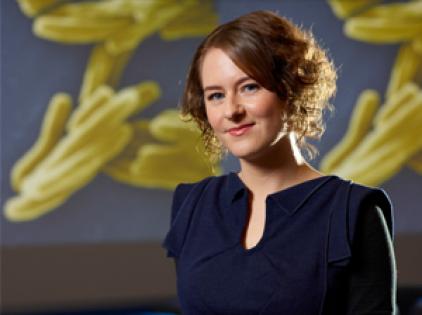Kat Holt has been a pioneer ever since she became the first student at the University of Western Australia to undertake an honours year in the then-fledgling area of bioinformatics.
Kat ventured across the Nullarbor to the Walter and Eliza Hall Institute of Medical Research in Melbourne where she sought advice from bioinformatics guru Professor Terry Speed. As a result, she ended up as a doctoral student at the world renowned Sanger Institute at the Cambridge University, one of the homes of the human genome project.
She then spent the next four years learning, developing and using the latest genomics techniques to investigate the evolution and genetic diversity of Salmonella typhi, the bacterium that causes typhoid fever. That meant working with samples from patients in Kathmandu and also Kolkata, Indonesia, the Mekong Delta and Nairobi.
Her work challenged established ideas on how typhoid spreads and led to a paper in Nature Genetics. She found that family members each had different strains of the bacterium. It wasn’t a single new strain spreading between them. So increases in infection were driven mostly by climate, not by outbreaks of a novel genetic strain.
“In the wet season, you get flooding, the drinking water becomes contaminated, and you get transmission and a lot of infections. So, in the one season you have infections caused by a whole variety of genetically different typhoid bacteria.”
It was a discovery that could only come from sequencing the whole genome.
“It’s a very recently emerged pathogen, so there’s little genetic variation to track. To get anywhere with it, you have to sequence the whole genome.”
Now, an expert in bacterial genomics, she is back home, still working on infectious diseases – and in Australia, some of the biggest problems of infection lie in hospitals.
One of Kat’s major projects is using genomics to study the origin, evolution and spread of antibiotic resistance in hospitals, particularly the role of Klebsiella, a bacterium that is rapidly becoming a problem worldwide because of its capacity for survival in a broad range of environments and its propensity for picking up novel genes.
She intends using the $25,000 she has received as L’Oréal Australia and New Zealand For Women in Science Fellow to study other species.
“We can leverage what we already have to look at drug-resistant bacteria in general.”
It’s one of five significant projects she is starting this year, most of them funded by Australia’s National Health and Medical Research Council.
To pursue this work, Kat has established a laboratory and her own research group at the University of Melbourne’s Bio21 Institute. But it’s not a place of sinks, pipettes, fridges and Petri dishes; it’s a group of computer terminals for analysing data. The studies she undertakes are highly computer intensive, and she and her team spend a lot of time using the supercomputers of the Victorian Life Sciences Computation Initiative.
“Genomics allows you to address a whole range of questions using one set of data: whether a bacterium is harmless or dangerous; its evolution; its transmission; what environments it can live in; what drugs are likely to be effective.”
Kat is the daughter of two biomedical scientists. So she grew up hearing all about science, and carefully avoiding biology at school. When she reached university, Kat wasn’t sure what she wanted to do, so she took on a combined Science/Arts degree majoring in genetics and philosophy.
“I continue to use what I learned in philosophy all the time - analytical thinking, writing, the underlying logic of things, how we know things.”
But, like her parents before her, she became hooked by biology in the end.
“I just got caught. I found it really interesting. And I could see how biology fitted in with the maths I was doing. Eventually I put the two together.”
It was at the Sanger Institute that the bacterial element of her work emerged.
“I went there thinking I was going to do something in human genomics, but what I found really engaging was the work to do with pathogens because of their relevance to global health, particularly to infectious diseases in developing countries,” Kat says. “I found it really inspiring to be doing my PhD in an area where a relatively small amount of effort can lead to big wins.”
She is now responsible for a group of five postgraduate students, two staff and a whole lot of projects.
“I now spend a lot of time on administration as well as hands-on research, but I’m starting to build a higher level vision of research.”
For instance, she’s now part of a bid to the Australian Research Council for funding to establish a collaborative centre involving “scientists from quite different backgrounds pursuing a common goal. It’s very exciting. But I still really love getting a few hours to sit down and analyse my data, and I’m also very passionate about teaching bioinformatics to students.
“It’s very empowering to be able to know enough about biology to ask questions, but also to have the analytical skills, in terms of statistics and computing, to be able to analyse data and answer those questions in meaningful ways. The challenge of bioinformatics today is getting people up to scratch in both of those areas, so that they don’t just answer other people’s questions, but can ask and answer their own biological questions.”
Outside the laboratory, Kat and her husband, also a scientist, enjoy travelling together, including field visits and to scientific conferences. Both work and recreation for them are ways of opening their minds to new experiences—pioneering.
Meet Kat here.



















__small.png)










